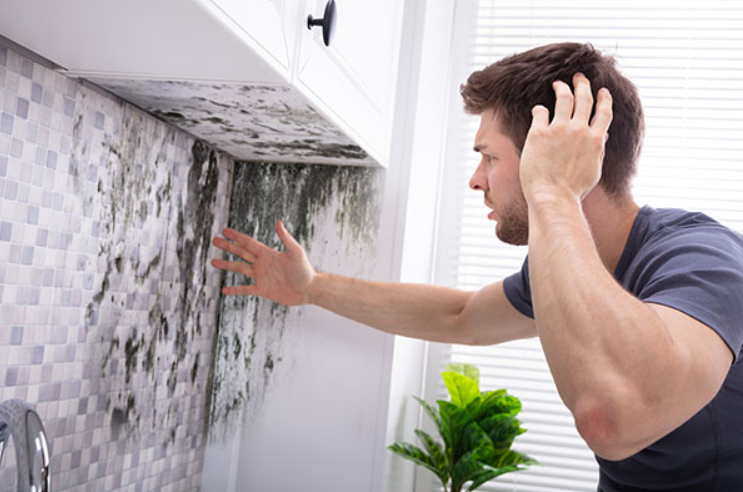Most homeowners despair to see black mold. It looks terrible and besides, it may also cause health problems to you and even your relatives. On the other hand, when dark patches that are furry start appearing on the surfaces near us, then that is a clear indication that our homes are infested by black molds. This begs the question; why does this happen in residential areas like ours? Therefore let us look into factors that facilitate growth of black mold in our midst plus ways in which we may avoid them.
Understanding Black Mold
Table of Contents
It’s important to first learn about what black mold is, before we discuss what causes it. Stachybotrys chartarum also called black mold belongs to the fungi kingdom growing well in dark and damp places where it gets its food from organic materials such as wood, paper or fabric hence developing rapidly in optimal conditions.
Black mold is known for its distinctive appearance, often presenting as dark green or black patches with a slimy or fuzzy texture. It can emit a strong, musty odor and release tiny spores into the air, which can be inhaled by humans and pets.
The Moisture Connection
The primary culprit behind black mold growth is excessive moisture. Mold spores are always present in the air, but they need the right conditions to take hold and grow. When there’s an abundance of moisture in your home, it creates the perfect breeding ground for black mold.
Common sources of moisture that can lead to black mold growth include:
- Leaky pipes or roof
- Flooding or water damage
- High humidity levels
- Poor ventilation in bathrooms or kitchens
- Condensation on windows or walls
If any of these moisture issues are left unchecked, they can quickly lead to a black mold infestation in your home.
The Dangers of Black Mold
Black mold does not juts ruin the appearance of the surfaces where it grows but also it can impact the health of someone negatively. Mold spores find their way into the atmosphere compromising humans’ respiratory system.
Exposure to black mold can cause symptoms like:
- Sneezing and runny nose
- Coughing and wheezing
- Eye irritation and redness
- Skin rashes or irritation
- Headaches and fatigue
Black mold exposure in cases that are worse can cause respiratory infections, allergic reactions, and even neurological problems. One’s susceptibility particularly if he/she has asthma or a weakened immune system already makes them at risk in case they are exposed to black mold’s effects.
Preventing Black Mold Growth
To minimize any risk of developing mold, it is crucial to control moisture levels in your home. Preventing mold infestation may involve many things, but keeping moisture levels within reasonable limits is the starting point.
Here are some tips for preventing black mold growth:
- Fix leaks promptly: Make sure you visit your home regularly to check for water leaks in pipes, roofs or windows so that you can fix them immediately to avoid the moisture build up.
- Control humidity: Ensure that relative humidity levels in your home remain at less than 50 % in places that are wet such as basements or bathrooms by using dehumidifiers and air conditioners.
- Improve ventilation: Make sure there is enough air in your home, especially in places that get wet because of things like washing and cooking. Let air move correctly either by using electric fans or by opening doors and windows.
- Clean and dry thoroughly: After any water damage or flooding, it’s crucial to clean and dry affected areas within 24-48 hours to prevent mold growth. Use fans, dehumidifiers, and professional water damage restoration services if necessary.
- Use mold-resistant products: When renovating or building, opt for mold-resistant drywall, paints, and other materials to minimize the risk of mold growth.
Dealing with Black Mold Infestations
It is playing with fire to try to eliminate it on your own for the simple reason that you can release spores back into the air making things even worse. When you find mold in your home or business premises, the wisest decision would be to hire mold removal service providers offering their services in Fort Worth. Having Let’s go with the best people who are there with right skills.
During the mold removal process, professionals will:
- Assess the extent of the mold problem
- Identify and address the moisture source
- Contain the affected area to prevent spore spread
- Use specialized equipment like HEPA filters and antimicrobial treatments
- Safely remove and dispose of mold-contaminated materials
- Restore your home to a safe and healthy state
Conclusion
Black mold is a serious issue that should never be ignored. By understanding the causes of black mold growth and taking proactive steps to prevent it, you can protect your home and your health.
Remember, moisture control is key. Keep an eye out for any signs of water damage, leaks, or excessive humidity, and address them promptly. If you do suspect a black mold infestation, don’t hesitate to seek the help of professional mold removal Fort Worth TX.
By prioritizing mold prevention and remediation, you can create a safe, healthy, and mold-free living environment for you and your loved ones.






Be the first to write a comment.